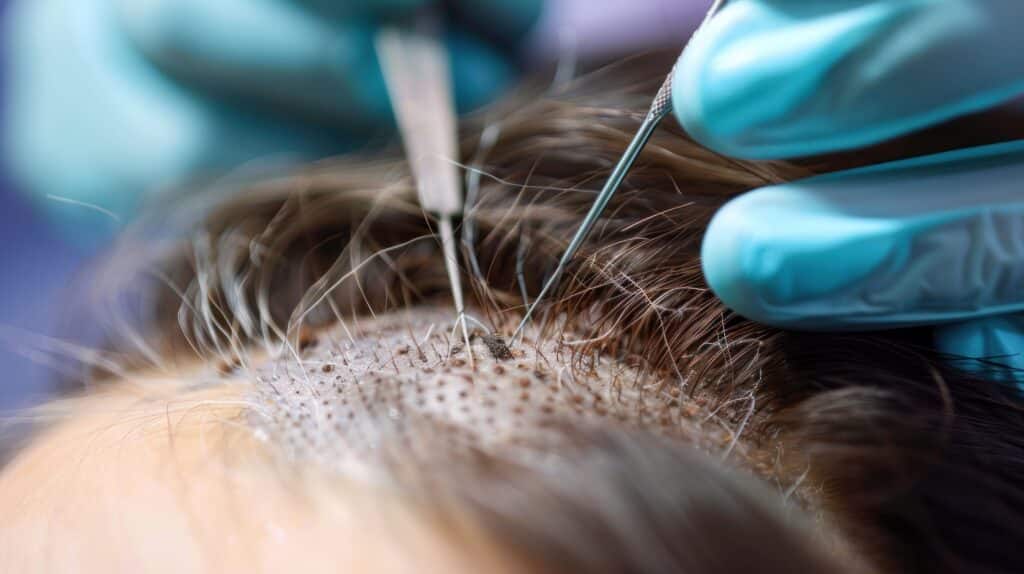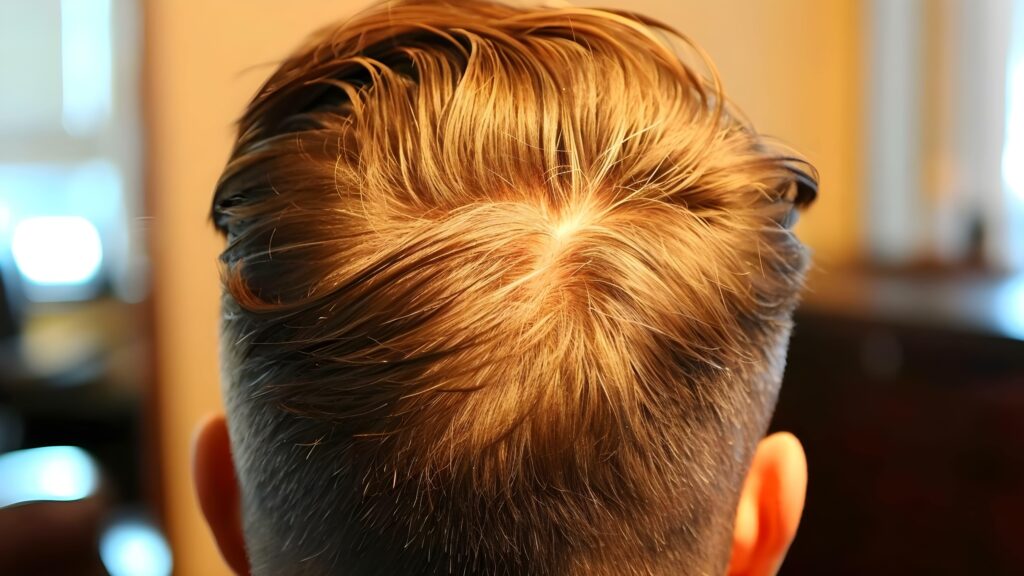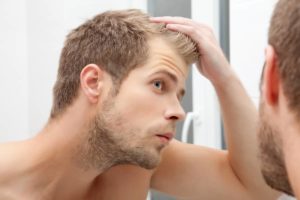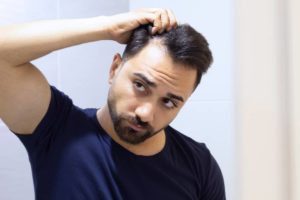How are the hair grafts extracted from the donor area during a hair transplant?

During the hair transplant procedure, the surgeon applies a local anesthetic to the shaved scalp. The back of the head contains the donor site, the area of the scalp from which surgeons take the grafts. The hair growing there does not react to Dihydrotestosterone and is therefore not sensitive to genetic hair loss.
Surgeons take hair follicles from the donor area and process them under a microscope. Depending on the technique, they either cut a strip of skin with hair roots (FUT hair transplant) or remove the hair roots from their natural environment with microneedles (FUE hair transplant).
Then, the surgeon makes incisions in the recipient area and inserts the hair follicles into the bald areas, following the natural hair growth direction and density. The hair follicles are only outside the scalp for a short time. The growth rate with this method is over 90 %.
What happens to the hair transplant donor area after the procedure?

After hair transplant surgery, most patients keep a close eye on the recipient area. However, patients must also care for the donor area to ensure an unimpaired healing process.
With the FUT method, the surgeon closes the wound with staples to allow the donor area to heal. They remove the staples after two weeks. A clear scar is visible at the back of the head. In the first few days after the hair restoration procedure, the donor area will be red and swollen. Until the surgeon removes the stitches, you should carefully wash your scalp with lukewarm water.
During Follicular Unit Extraction, the grafts are removed from the donor area with hollow needles. You do not need to stitch the resulting small wounds. Healing takes place more quickly. To speed up the healing process even more, surgeons can remove hair follicles with special tweezers during hair transplantation in the donor area (percutaneous method).
Crusts of blood and tissue water form over the micro-wounds. Due to the so-called shock loss, the surrounding hairs adjacent to the donor area can fall out. Sometimes it can take up to six months for the hair around the donor area to grow back completely.
How do I best care for the donor area after the hair transplant?

To speed up healing in the donor area, you will need to wash it daily from 48 hours after the procedure. In addition, you should apply a moisturising spray to soften the crusts. The donor area must not come into direct contact with a pillow or tight-fitting headgear for the first few days. For that reason, it is necessary to use a neck support pillow for six days after the procedure.
In order for the crusts to heal more quickly, you need to apply a care lotion to the donor and recipient areas. Leave it on for 45 minutes and then gently rinse the scalp with water. You must wash your hair especially carefully to avoid tearing off the crusts.
In most cases, you can use a normal, mild shampoo after 14 days. Allow the scalp to air dry, as the heat from a hairdryer can cause inflammation.
To ensure that the healing of the donor area is not affected, you should avoid salty and highly spiced foods and not consume alcohol or nicotine for a few weeks before and after the hair transplant.
Your hair transplant is in good hands at Cosmedica Clinic
During hair transplantation, Dr. Levent Acar removes hair from the donor area with the implantation pen (Choi pen). The surgeon inserts the grafts between the remaining hairs in the recipient area. It is not necessary to shave the scalp beforehand.
Dr. Acar is a hair surgeon with an international reputation who has also treated many prominent personalities from, sports, politics and culture. Numerous hair transplant before and after pictures testify to the high quality of the procedures. Twelve months after the procedure at Cosmedica Clinic, healthy hair grows in thick and strong, achieving the final results.
By offering all-inclusive packages, the costs for a hair transplant in Turkey can be calculated precisely. Due to the lower personnel costs, they are around 50 % lower than the costs at clinics in the UK. Book a free consultation now.
FAQ
Surgeons extract hair grafts either by cutting a skin strip (FUT) or by using microneedles (FUE) from the back of the head. The doctor administers local anesthesia to the area to ensure comfort while obtaining high-quality grafts that resist genetic hair loss.
The donor area can be red, swollen, or have small wounds depending on the method used. With FUT, stitches are required, while FUE leaves small, unstitched wounds. Healing times and care requirements vary, influencing overall recovery.
To speed up healing, wash the donor area daily from 48 hours post-procedure. Use a moisturizing spray to soften crusts. Avoid direct contact with pillows and tight headgear initially, and refrain from consuming salty foods, alcohol, or nicotine for a few weeks.




